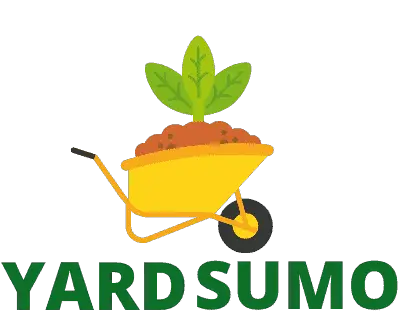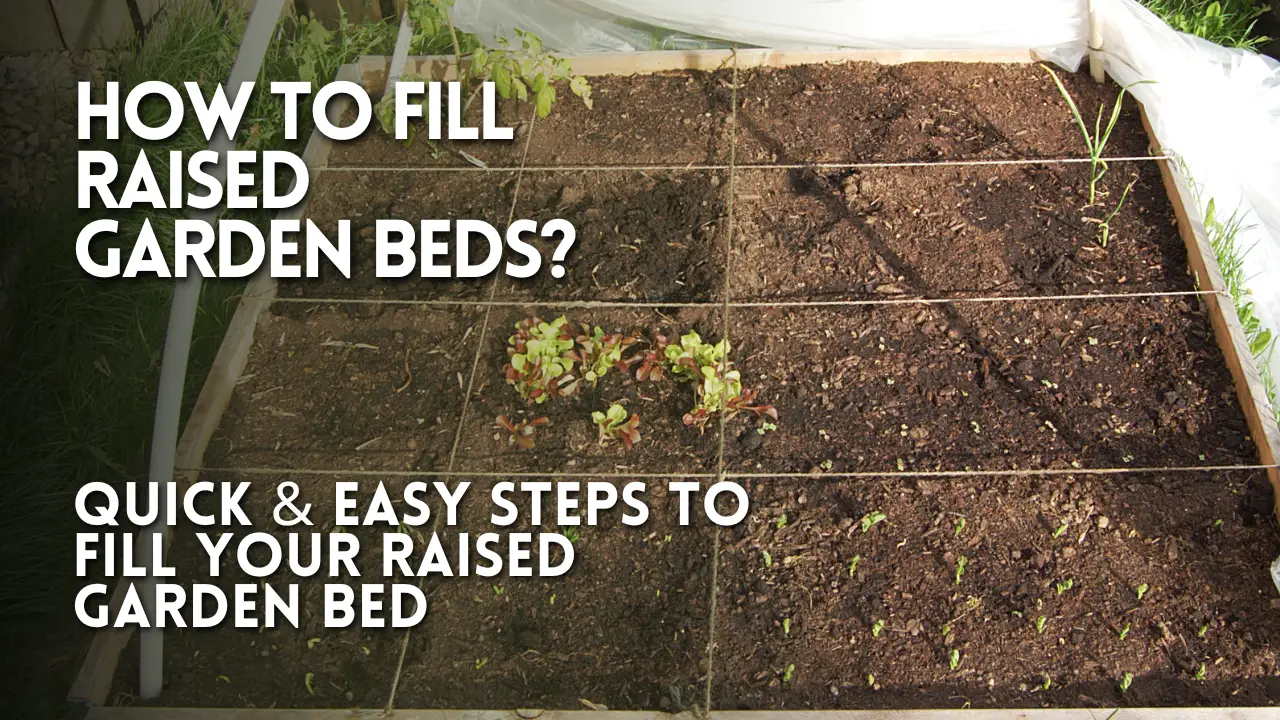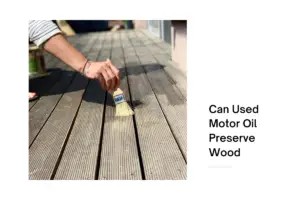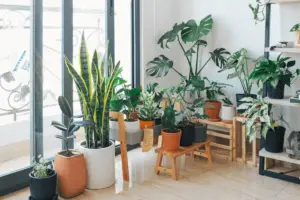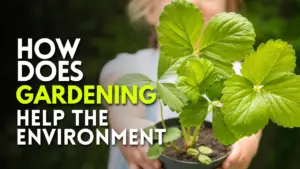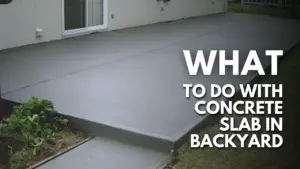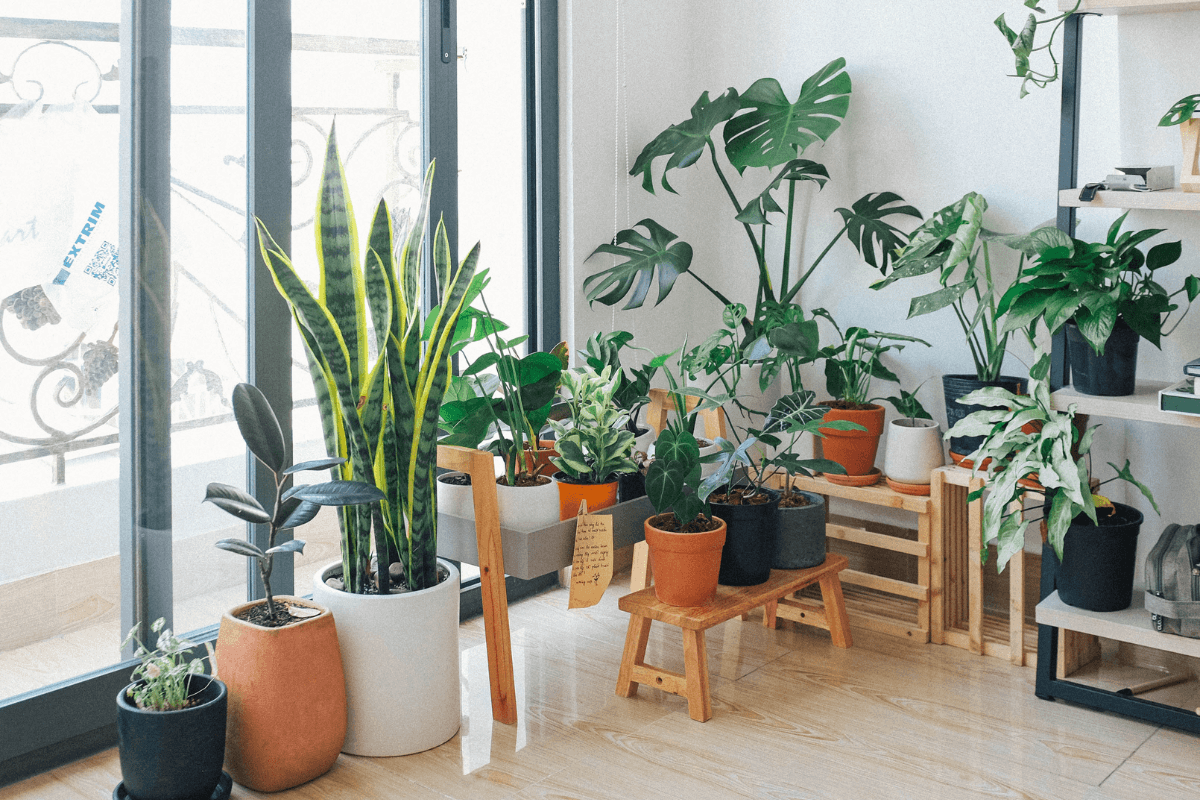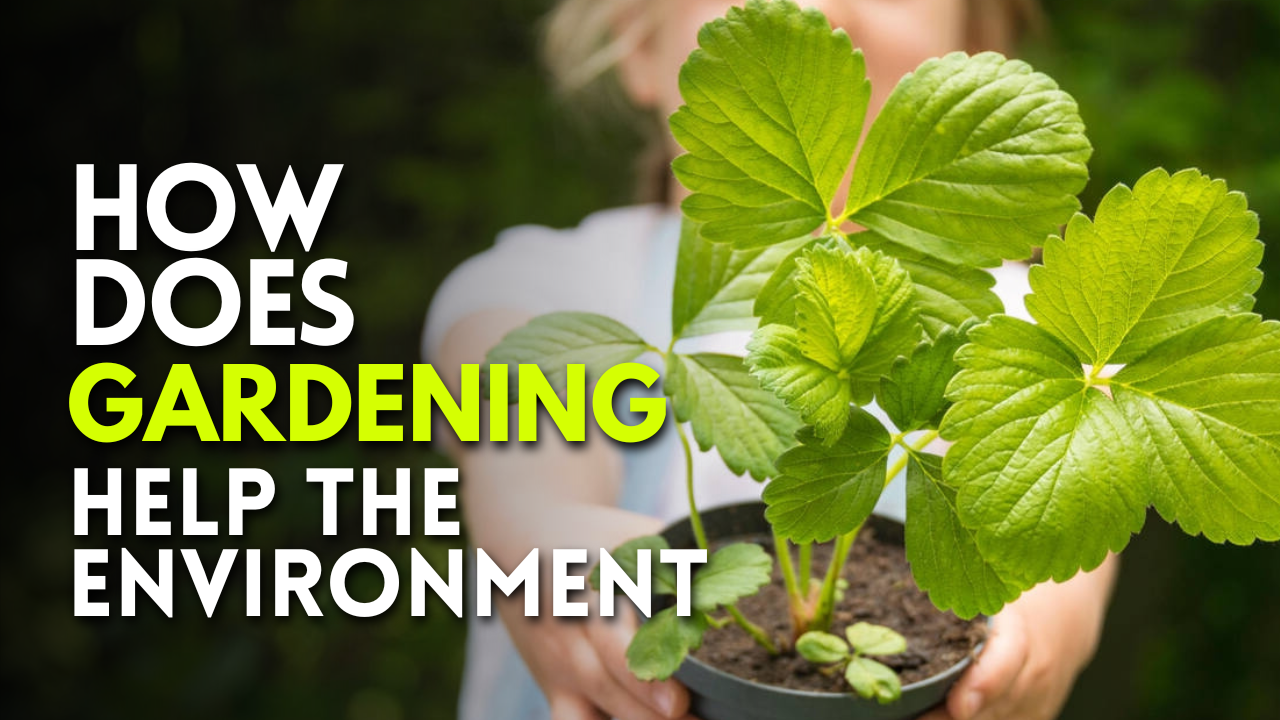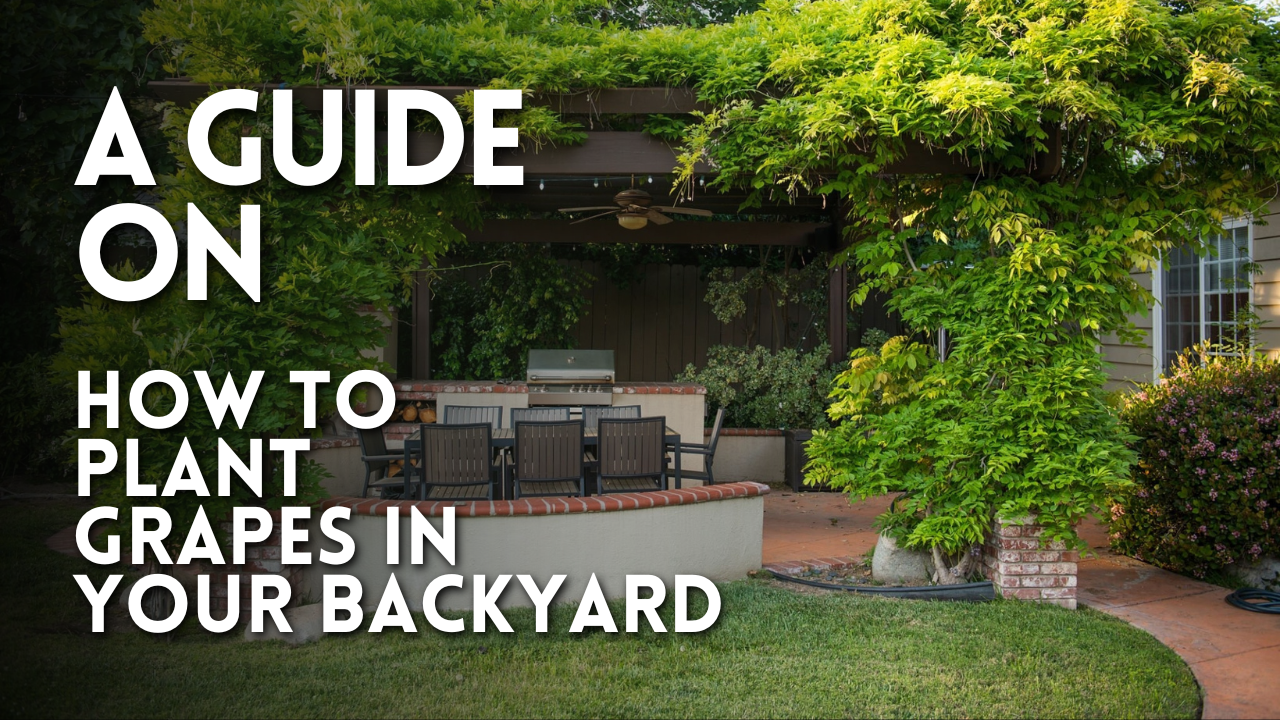If you’re one of those gardeners who don’t know how to fill their raised bed, you’re just in the right place! You’d be both happy and surprised that filling raised garden beds is ridiculously easy and takes little time and effort.
Keep reading if you’re eager to learn about the best, easiest way to fill your raised garden bed in only six easy steps. There’s also a bonus method at the end of the article to fill your bed that you don’t want to miss!
Step 1: Decide How Much Soil You Need
First, you want to determine the amount of soil you need before anything else. Use a tape measure to measure the size of your garden bed. Make sure you have clear measurements of its length, width, and depth.
After that, you want to find an online soil volume calculator and enter your bed’s measurements. You can easily find them online, but if you want help, this one may work for you: https://www.gardeners.com/how-to/soil-calculator/7558.html.
Don’t forget that you’ll combine the soil with compost—the volume you should have after adding compost to the soil will therefore be the number the calculator gives you.
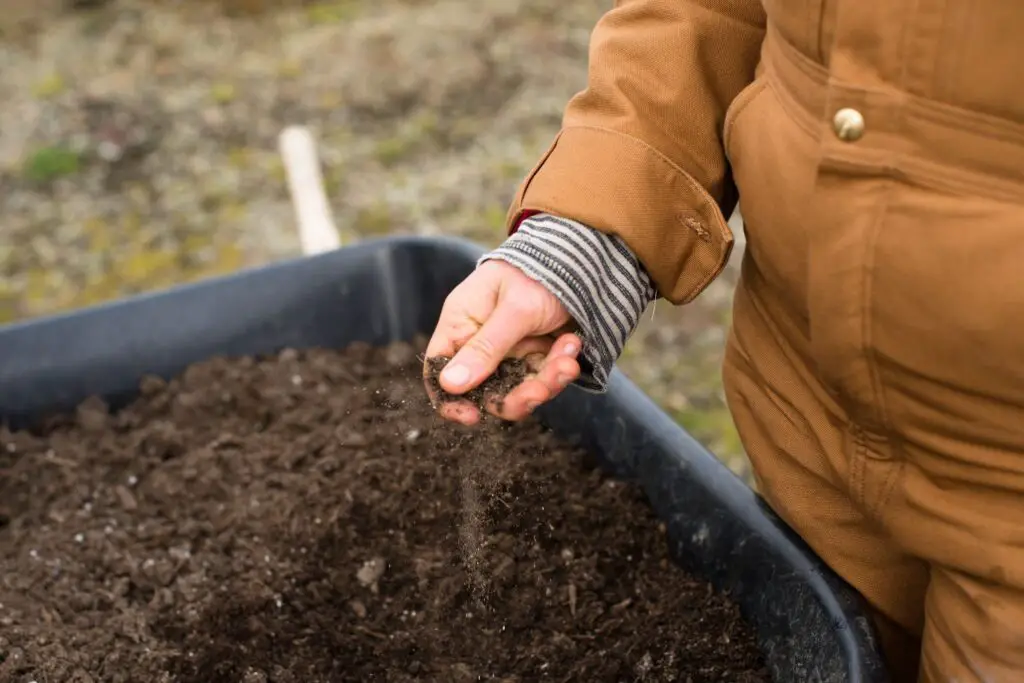
Step 2: Get the Soil
Native soil is the best for raised beds. It would be great if you could gather soil that is native to the area you live in from your yard. If your yard has extra soil, just gather the necessary amount in a wheelbarrow or a bucket and transfer it to your raised bed.
No native soil? No problem! You can always opt for buying nutrient-rich mixtures. If soil is not readily available, you can buy a faux mix or topsoil from a gardening supply shop. Make sure the soils are similar in consistency if you decide to combine soil from your yard with soil another type of soil.
Note: Nitrogen is the most important ingredient that your soil needs.
Step 3: Get the Compost
While you can easily find composts at any gardening supply store, you can still make your mix if you don’t want to purchase it. By allowing organic waste to break down in a compost bin, you can create your composite without spending a cent.
If you decide to buy the compost, make sure to check the ingredients first—manure, plant debris, and food scraps are the main ingredients in the best composts.
Step 4: Mix the Compost With Soil
Compost and soil should be combined in a 1:1 ratio. A perfect balance between compost and soil is the main goal. Measure the compost and soil before adding them to the bed. Or estimate the amounts by eye if you’re confident of your abilities as a gardener! Don’t stress about accuracy.
After adding soil and compost to the bed, thoroughly combine the two materials with a gardening tool (such as a till). Of course, you can use your hands, but wear gloves first.
Step 5: Work Your Hand Through the Mix to Remove Any Rocks
This step is important. Rocks should be removed from your mixture. You want to remove rocks from your yard anytime you notice them and put them in another place. The growth of your plants may be hampered by the presence of too many big rocks.
Step 6: Fill the Bed
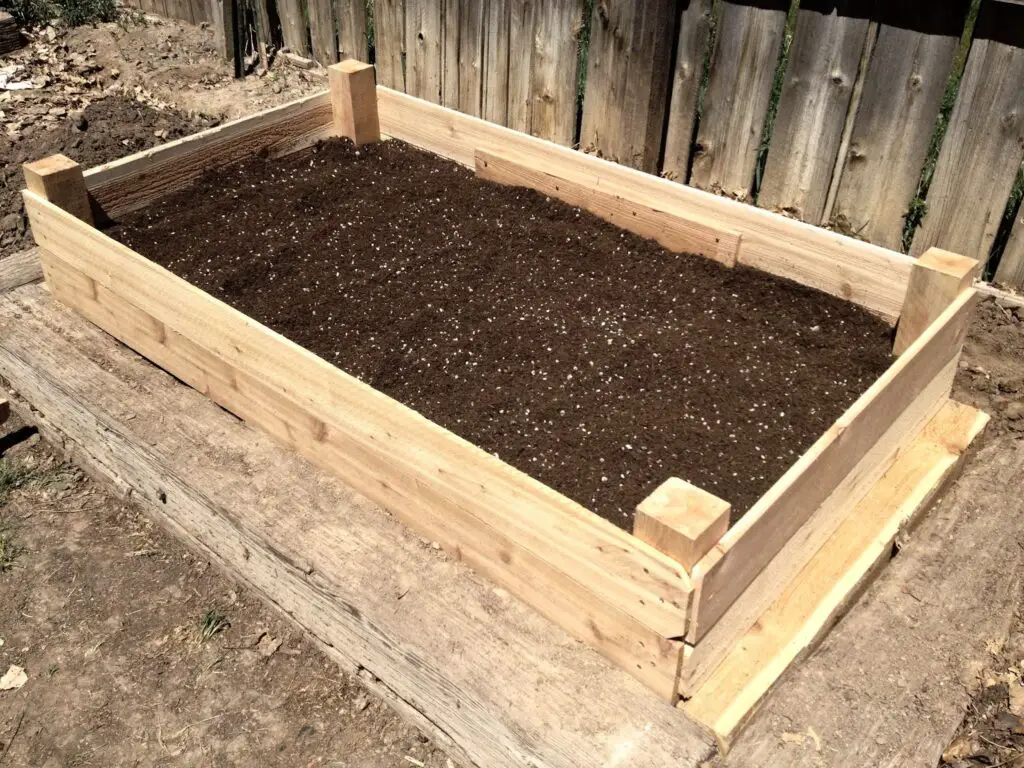
Your garden bed should be about filled. Depending on your preferences and the type of plants you intend to grow, decide how high to fill your raised bed.
Bonus Method: Lasagna Gardening
The age-old sheet composting method, also known as lasagna gardening, is frequently used to extend a perennial border or turn a section of lawn into a vegetable patch. Lasagna gardening is an excellent technique to fill raised beds with a healthy growing medium for edibles in urban gardens with contaminated, poor soil. Here’s how to fill your raised bed using the lasagna gardening method:
- Collect organic materials such as leaves and grass clippings that can be composted. Compost is used as the base layer, and soil as the top layer in lasagna gardening. You want to have a mixture of two-part leaves and one-part grass clippings. You can use the leaves from the trees in your yard. As for the grass clippings, you can gather them from mowing your lawn. If you can’t get leaves or grass clippings for any reason, you can ask someone at any local gardening store to recommend alternatives.
- Lay down a layer of newspaper or cardboard. This will decompose slowly, absorbing moisture and burying weeds as it does so. Whichever option you choose, you’ll need a minimum of four overlapping layers and a maximum of six layers. The layer of cardboard or newspaper should extend to the raised bed plot’s edges.
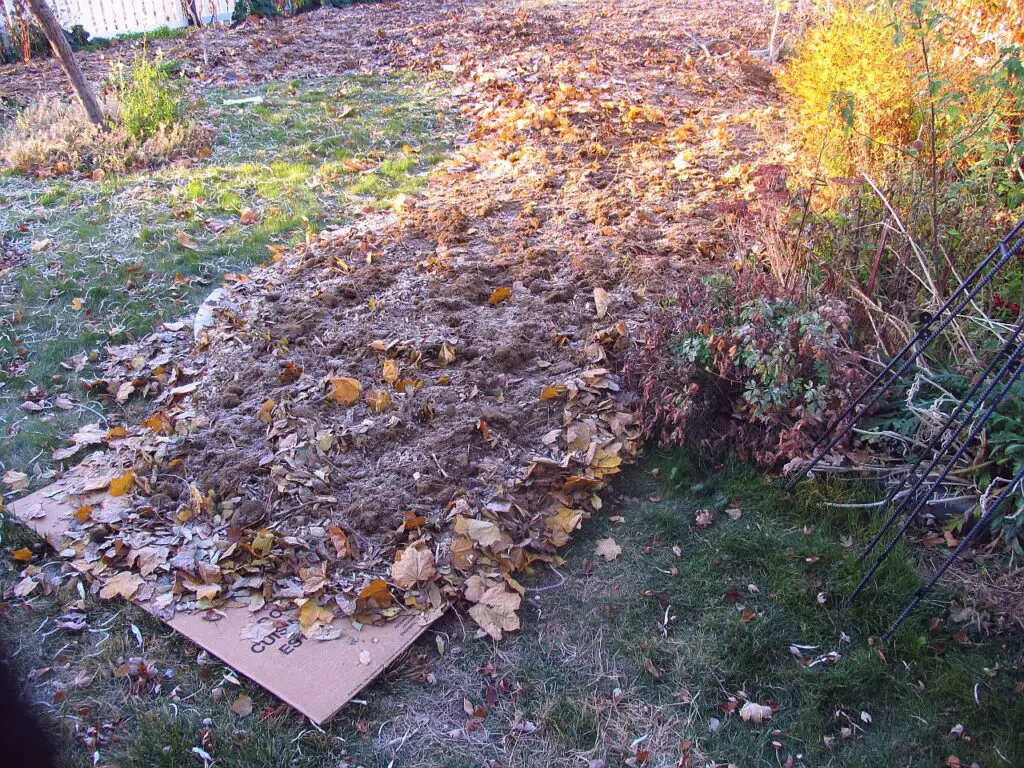
- Lay the compost on top of the cardboard or newspaper. Make sure to spread the compost evenly across the newspaper or cardboard layer. Then, use this material to fill your raised bed up halfway.
- Use your hands to thoroughly combine any compostable materials you’re using.
- Layer your compost with the soil. Again, native soil is the best for raised beds. You can gather soil native to the area you live in from your yard. You can always buy nutrient-rich mixtures if you can’t get native soil.
- Check the soil with your hand to ensure it doesn’t contain anything that can prevent your plants from growing (such as rocks).
- Fill your bed nearly to the top. Put your soil directly on top of the cardboard or newspaper layer. And that’s it!
Now that you know two different methods to fill your raised garden beds, nothing can stop you from growing the most beautiful plants in your garden and enjoying the fruits of your labor!
Here are som other articles you might find interesting:
